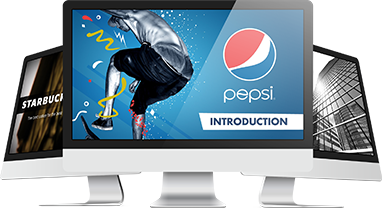All successful pitches depend on how well you convince your audience. You can use pitch deck techniques such as relating to common ethics, simplifying your pitches and following a three-part structure to your advantage.

The one secret that connects all of these is an understanding of the most basic models of communication.
These basic communication models have three things in common:
- Sending a message (in this case, your pitch)
- Receiving/understanding it (on the side of your clients/audience)
- The noise or factors preventing others from properly interpreting your message
Once you familiarize yourself with these three, you will be able to compose more specific and understandable messages for your audience, regardless of the pitch deck technique you use.
According to brand specialist Carmine Gallo, a great way to practice this is making your topic short enough to fit a Twitter headline. This strips your pitch into a concise statement that guides the rest of your pitch deck. It also keeps your audience grounded on what you want them to hear and see.
The Communication Model
One of the most basic models of communication was developed in 1948 by Claude Shannon, a mathematician and electronic engineer, and his co-author, Warren Weaver. From a presenter’s point of view, the sender is the speaker giving the pitch, the channel is the pitch deck, and the receiver is the audience.
During the decoding process, the receiver translates the message into mental images or symbols that make sense to them.
Your audience needs to visualize exactly what’s in your mind. When structuring your message, the words and images that you use should show exactly what you’re thinking.
For instance, if you want to pitch the idea that Nike Shox helps you jump higher (Aitchison, 2004), center your topic and your investment pitch decks on that specific idea
Watch Out For Noise
In their work, Looking out/looking in, Adler and Towne identify another component of this model: noise.
While not limited to disruptive sounds, noise includes anything that prevents you from properly sending your ideas to your clients. Poorly constructed and text-heavy pitch deck slides, a sloppy manner of speech and cluttered image layouts all contribute to noise. Prevent these problems by keeping your message concise and grounded on a specific main idea.
If the Nike Shox ad was presented with technical explanations and scientists in a lab, would it be as effective as Vince Carter jumping over Gary Payton and his huge wig?
Feedback
Since pitches have a Q&A part, your audience can and will react with their own feedback.
This ranges from clarifications on your costs, the implementation of your proposal to praises and sometimes, negative feedback.
Clients may object to your proposal because it goes against their current corporate strategies, costs more than what they plan to invest, or simply because the pitch was not properly explained.
Remember that regardless of the feedback, addressing it properly can give your clients the impression that you have thoroughly composed your pitch and solidified it enough to answer any concerns.
—
This basic model forms the basis of all investment pitch decks.
As long as messages are built around a clear and specific idea, any presenter will be able to successfully deliver their messages while minimizing the amount of negative feedback.

Download free pitch deck templates now.
Get professionally designed pitch deck slides weekly.
Sign Up NowReferences:
“Ad Agency Tricks: Outsell Competitors in Sales Presentations.” pitchdeck.com, 2015. Accessed May 11, 2015.
Adler, R., & Towne, N. Looking out/looking in (2nd ed.). New York: Holt, Rinehart and Winston, 1978.
Aitchison, J. Cutting Edge Advertising: How to Create the World’s Best Print For Brands in the 21st Century. Singapore: Prentice Hall, 2004.
Nike Shox. TV Ad.
“Communication Models.” Tutorialspoint. Accessed May 11, 2015.


